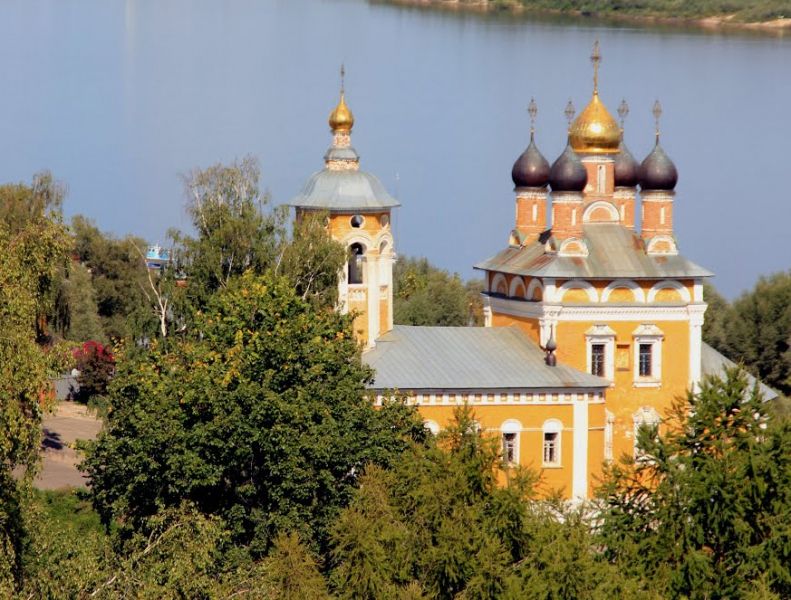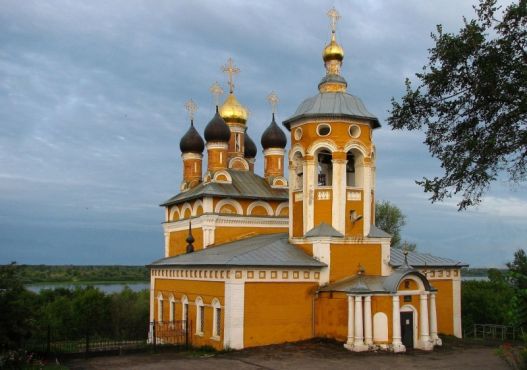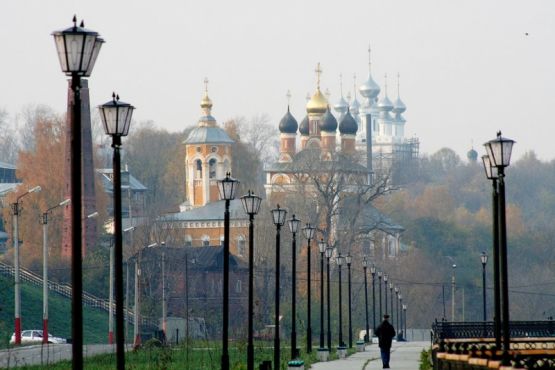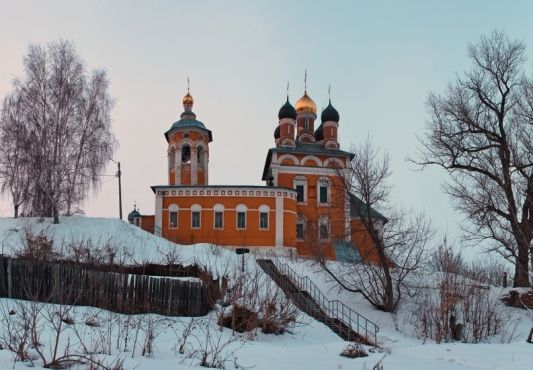Church of St. Nicholas-Embankment
Church of St. Nicholas-Embankment (the Church of St. Nicholas the Wet) is located on the high bank of the Oka River. This noticeable bright yellow church has a beautiful view not only from the river itself, but from the towns's Oka Park. On the Shore street of Murom used to live the traders and fishermen, who supplied fish to the royal court. The temple is located on the site of a wooden church of the 16th century, which, according to legend, stood near the wooden palace of Ivan the Terrible. The new church was built in 1700-1717, contrary to Peter I's ban on stone construction. Funds for the temple were allocated by the Moscow priest D. Khristoforov, who thus immortalized the memory of his father, a priest, who used to serve in the wooden church of St. Nicholas.
Initially, the Church of St. Nicholas-Embankment was very small – in one volume. The walls of the quadrangle are decorated simply and gracefully: under the cornice the building is surrounded by a series of decorative arches instead of zakomars and a carved thin frieze. High drums of five heads at the bases are decorated with semicircular kokoshniks. The domes are very close to the helmet shape. Despite the general compositional features with the Murom temples of the second half of the 17th century, the Church of St. Nicholas-Embankment has some peculiar details of the " Peter's " baroque: the bundles of columns under a common capital in the corners of the building, the platbands of windows from the same columns, with "torn" gables above.
The bell-tower and a wide refectory were added only in the 19th century. The silhouette symmetrically adjacent to the main volume of the squat refectory, connected with the bell-tower, is somewhat facilitated by a number of small, elongated windows with semicircles at the top of the platbands. Under the roof the walls of the refectory are decorated with a frieze of square grooves. The two-tiered octagonal bell-tower (octagon on the quadrangle) is crowned with one head. Under the cornice, the bell-tower is surrounded by a series of round windows. The ringing tier is decorated with arches stylized for false zakomars of the main volume.
At the end of the 17th century, a carved gilded iconostasis was installed in the church of St. Nicholas, in which, along with traditional icons were built in images of twelve sibyls – prophetesses who predicted the birth of Christ – written by the local artist A.I. Kazantsev. Before the revolution of 1917, the church housed the icon of St. Nicholas the Wonderworker of the 14th century, the only surviving icon-painting monument dating back to the ancient stage of the history of the Murom Principality. Now the image is kept in the Murom Art Museum.
In the Church of St. Nicholas-Embankment, Vladimir Kozmich Zvorykin, the inventor of modern television, was baptized.
At the foot of the mountain, under the temple there is the spring of St. Nicholas – the most revered among the people. According to legend, Nicholas the Wonderworker himself appeared several times at the spring, and water has healing power. It is believed that the underground creek, before coming to the surface, washes the silver cross laid in the base of the temple.
In 1992, the Church of St. Nicholas-Embankment that suffered from the time and desolation was returned to believers and restored.
 Tourism portal of the
Tourism portal of the


